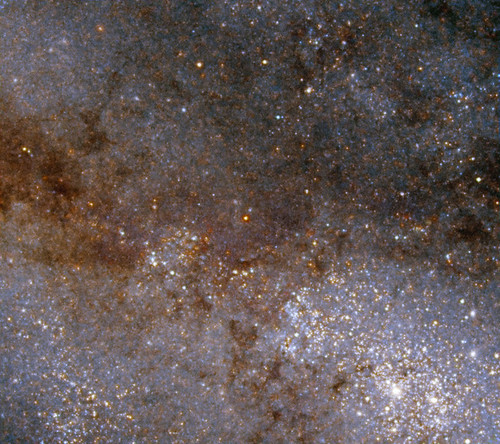Text

An F-35A Lightning II aircraft assigned to the Wisconsin Air National Guard's 115th Fighter Wing taxis out to perform night flying operations March 14, 2024, at Truax Field in Madison, Wisconsin. (U.S. Air National Guard photo by Master Sgt. Mary Greenwood)
17 notes
·
View notes
Text


Concept art of the Space Shuttle returning from Space.
Artwork by G. Harry Stine
Date: 1978
Posted on Flickr by Numbers Station: link, link
703 notes
·
View notes
Text
Captain Schleeh and crew of the 305th Bomb Group, beside a Boeing B-17 Flying Fortress.
U.S. Air Force Number C60711AC
Date: April 22, 1943
NARA: 204853092
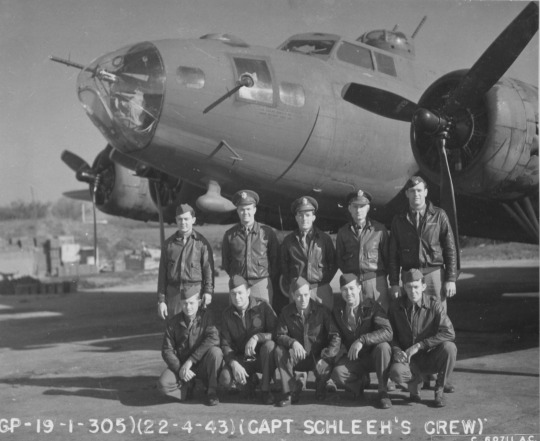
118 notes
·
View notes
Text

Space Shuttle Enterprise being hoisted into test tower on into the 420-foot Vibration Test Facility in Marshal Space Flight Center, Huntsville, Alabama, for a series of vibration tests to simulate an actual launch.
Date: April 22, 1978
source
#Space Shuttle#Space Shuttle Enterprise#Enterprise#OV-101#Orbiter#NASA#Space Shuttle Program#Marshall Space Flight Center#Huntsville#Alabama#Mated Vertical Ground Vibration Test#MVGVT#April#1978#my post
14 notes
·
View notes
Text

Stars Sparkle in New Hubble Image by NASA Hubble Space Telescope
196 notes
·
View notes
Photo
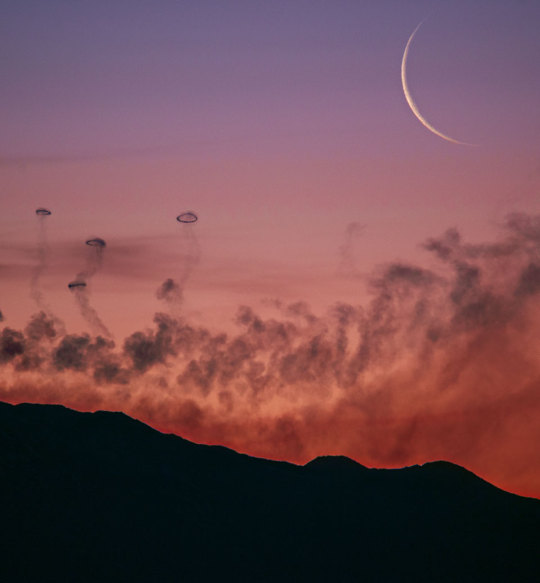
2024 April 22
Moon and Smoke Rings from Mt. Etna
Image Credit & Copyright: Dario Giannobile
Explanation: Yes, but can your volcano do this? To the surprise of some, Mt. Etna emits, on occasion, smoke rings. Technically known as vortex rings, the walls of the volcano slightly slow the outside of emitted smoke puffs, causing the inside gas to move faster. A circle of low pressure develops so that the emitted puff of volcanic gas and ash loops around in a ring, a familiar geometric structure that can be surprisingly stable as it rises. Smoke rings are quite rare and need a coincidence of the right geometry of the vent, the right speed of ejected smoke, and the relative calmness of the outside atmosphere. In the featured image taken about two weeks ago from Gangi, Sicily, Italy, multiple volcanic smoke rings are visible. The scene is shaded by the red light of a dawn Sun, while a crescent Moon is visible in the background.
∞ Source: apod.nasa.gov/apod/ap240422.html
86 notes
·
View notes
Text

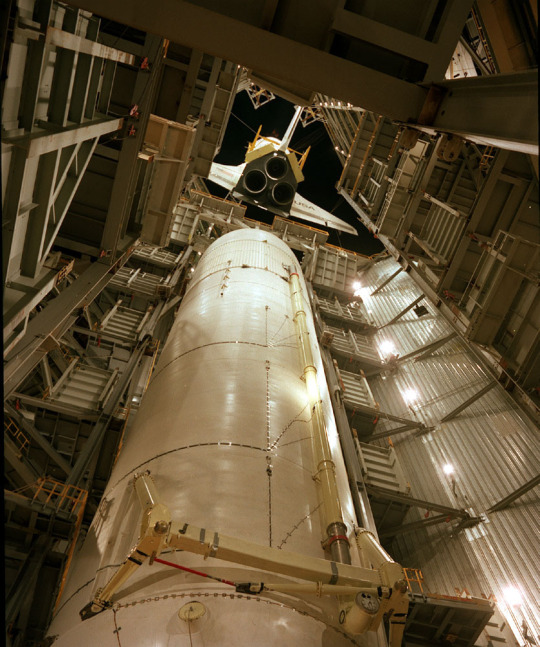
"Space Shuttle Project
This is an interior ground level view of the Shuttle Orbiter Enterprise being lowered for mating to External Tank (ET) inside Marshall Space Flight Center's Dynamic Test Stand for Mated Vertical Ground Vibration tests (MVGVT). The tests marked the first time ever that the entire shuttle complement (including Orbiter, external tank, and solid rocket boosters) were mated vertically."
Date: April 21, 1978
NASA ID: 7889018, 7889019
31 notes
·
View notes
Text
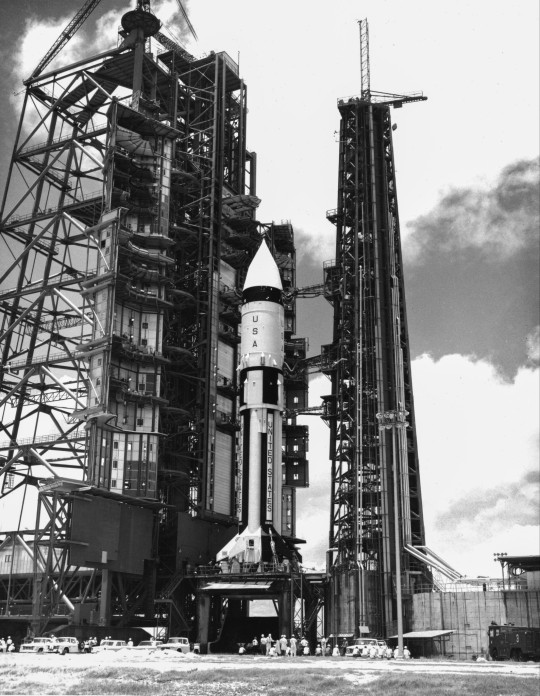
Apollo AS-203 Saturn IB (SA-203) on Launch Complex 37B, shortly after all of the components were stacked.
Date: April 21, 1966
NASA ID: 107-KSC-66P-302
31 notes
·
View notes
Text

Panoramic view of Station 1
"This picture of the lunar surface was photographed by astronaut John W. Young during Apollo 16's first extravehicular activity (EVA) at EVA Station No 1. The instrument near the small crater's edge (foreground) is a gnomon. While astronauts Young, commander; and Charles M. Duke Jr., lunar module pilot; descended in the Apollo 16 Lunar Module (LM) 'Orion' to explore the Descartes highlands landing site on the moon, astronaut Thomas K. Mattingly II, command module pilot, remained with the Command and Service Modules (CSM) 'Casper' in lunar orbit."
Date: April 16-27, 1972
NASA ID: AS16-114-18421
24 notes
·
View notes
Text
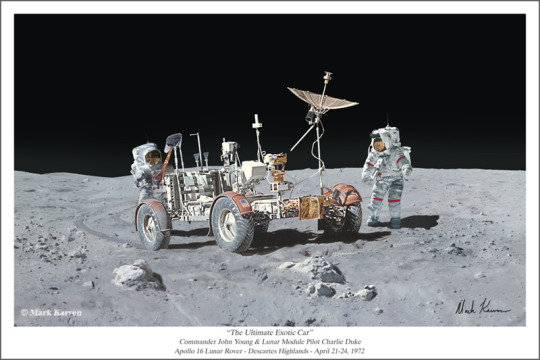
"The Ultimate Exotic Car" by Mark Karvon, link.
"During the Apollo missions it was considered that a vehicle would help the astronauts to greater explore their landing sites as well as collect and carry more samples. The Lunar Roving Vehicle was flown and used on the last three Apollo missions. It was an absolute marvel of engineering. It had to be compact and light weight enough to be able to fit into the Lunar Module. It also had to be able to endure lift-off and flight aboard the Saturn V. It had to be strong in order to transport two astronauts and rock samples. It also had to endure the harsh lunar environment including extreme temperatures and excessive dirt and dust. It had to be maneuverable and easily controllable over rugged terrain and remain absolutely reliable.
The Lunar Rover, developed by General Motors and Boeing, met all of these conditions and more. The vehicle as designed and deployed was battery powered. It weighed 460 lbs without astronauts or samples. It was designed to reach 8 MPH but could actually go over 11 MPH. Four rovers were built at a total cost of $38,000,000. They were driven an average of over 18 miles on each of the three missions on which they were used and there were no major mishaps. As of 2020 it remains the only manned vehicle operated on another world. One could say it is the ultimate exotic car.
This artwork depicts the Lunar Rover of Apollo 16. Commander John Young and LM Pilot Charlie Duke arrive at the edge of Ray Crater during their exploration of the Descartes Highlands.
Prints are available through my website, www.markkarvon.com."
65 notes
·
View notes
Text
I always forget that Atari made PCs for a while in the 1980s. It seems to be at first bonkers at first but it does make sense. Like if Sega pivoted to gaming computers after the Dreamcast failed.

Atari
39 notes
·
View notes
Text

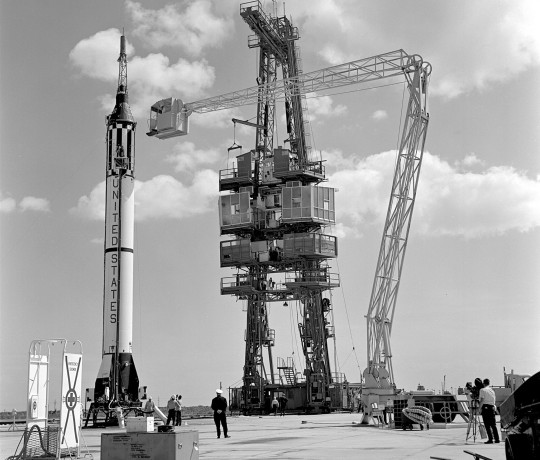
Mercury-Redstone 3 (Mercury Spacecraft No. 7/MR-7) Freedom 7 on Launch Complex 5, during prelaunch activities.
Date: April 21, 1961
NASA ID: link, GPN-2000-001006
60 notes
·
View notes



